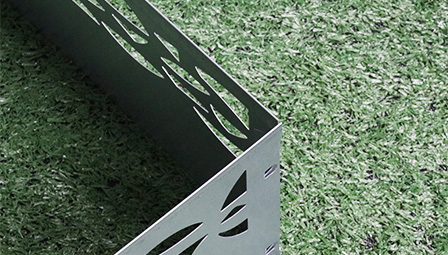Exploring the Versatility of Plain Weave Mesh Fabrics for Various Applications
Sep . 23, 2024 19:23
Understanding Plain Weave Mesh A Comprehensive Overview
Plain weave mesh is a textile structure characterized by its simplicity, durability, and versatility. This type of weave is one of the most fundamental and widely used weaving patterns in the textile industry, providing a base for various materials and applications. In this article, we will delve into the characteristics, manufacturing processes, applications, and benefits of plain weave mesh.
Characteristics of Plain Weave Mesh
Plain weave, also known as tabby weave, consists of alternating over-and-under patterns, where each warp thread (vertical) is interlaced with each weft thread (horizontal). This simplistic structure creates a tight and dense fabric that offers excellent strength and stability. The spacing between the threads can vary, influencing the mesh's properties and applications.
One of the defining features of plain weave mesh is its balanced appearance. The weave allows for equal treatment of both sides of the fabric, resulting in a non-directional surface. This characteristic makes it versatile for a range of applications, as it can perform uniformly regardless of orientation. Additionally, plain weave fabrics tend to be less prone to fraying compared to other weaving techniques, which enhances durability.
Manufacturing Processes
The production of plain weave mesh involves several stages, starting from the selection of the appropriate yarn. The yarn can be made from varied materials, including cotton, nylon, polyester, and metal, depending on the intended use of the mesh.
Once the yarn is chosen, the weaving process begins on a loom, where the warp threads are set up vertically while the weft threads are woven across. The interlacing of threads forms the characteristic grid of the plain weave mesh. Depending on the desired density and texture, adjustments can be made to the spacing and thickness of the threads. After weaving, the fabric may undergo finishing processes, such as rinsing or coating, to enhance its performance attributes.
Applications of Plain Weave Mesh
plain weave mesh

Due to its robustness and structural integrity, plain weave mesh finds applications across diverse sectors. In the textile industry, it is commonly used for clothing, home furnishings, and accessories. The balance of breathability and strength makes it ideal for items like shirts, curtains, and bags.
Moreover, plain weave mesh plays a pivotal role in industrial applications, such as filtration and screening. Its tight structure allows for efficient separation of particles in processes like water treatment and food processing. In the construction industry, it is used in reinforcing materials to improve structural stability, and in architecture, it provides aesthetic qualities when used in facade panels.
In the realm of safety, plain weave mesh is utilized in protective equipment such as gloves and aprons. The strength of the weave helps prevent injuries in various work environments, showcasing its role in enhancing safety standards across industries.
Benefits of Plain Weave Mesh
The plain weave mesh format offers numerous benefits. First, its strength and durability make it suitable for both lightweight and heavy-duty applications. Secondly, the ease of manufacturing and versatility of materials used reduces production costs while maintaining quality. Additionally, plain weave mesh is easy to dye and print on, allowing for creative design possibilities that cater to fashion and branding needs.
Finally, the balanced structure of the weave enhances its resistance to wear and tear, making it a preferred choice for both aesthetic and functional garments. Its simplicity also means that it can be produced quickly, meeting the demands of fast-paced industries.
Conclusion
In summary, plain weave mesh serves as a fundamental building block in various textiles and industrial applications. Its unique combination of strength, versatility, and aesthetic appeal continues to cement its relevance in an ever-evolving market. Whether in fashion or industrial contexts, plain weave mesh remains a valuable resource, offering solutions that address both functional and visual needs.




















